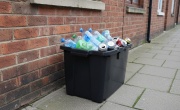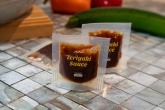European trade associations publish guidance for food grade plastic compliance
Joint initiative aims to support waste operators in getting certification and meeting EU requirements for recycled PET food contact materials.
 A joint initiative between industry organisations has published new guidance to help waste management operators comply with EU regulations on recycled plastic material intended for food contact.
A joint initiative between industry organisations has published new guidance to help waste management operators comply with EU regulations on recycled plastic material intended for food contact.
The guidance, developed by EuPC, EXPRA, EPRO, NMWE, PETCORE Europe, and UNESDA, aims to give clarity on getting certification under EU Regulation 2022/1616, which requires operators to demonstrate the existence of a third-party certified quality assurance system for recycled plastic.
The document covers pre-processing activities, including collection and sorting centres, but excludes pre-treatment operations such as washing and grinding, which are already covered by existing third-party certification schemes.
Explaining the purpose of the release, Raphael Jaumotte, Technical Manager at PETCORE Europe, said: “This guidance is the result of extensive collaboration among experts in food contact regulation, waste management, recycling, conversion, and packaging. It aims to ensure the safety of PET. We developed it to support businesses in meeting the relevant EU requirements.”
Waste origin and collection requirements
The guidance establishes strict criteria for acceptable waste sources, stating that collected waste must originate only from post-consumer municipal waste, food retail, food businesses that used materials for food contact, or closed-loop recycling schemes. All waste must be traceable from collection to the input stage of processing.
Separate collection systems are also mandatory to avoid contamination. Acceptable systems include deposit return schemes and separated municipal packaging collection. The guidance explicitly excludes mixed waste collection, ocean plastic, and hand-picking from residual waste as non-compliant methods.
Plastics intended for food contact present specific safety challenges because of the contamination risks from previous uses or the recycling process itself. These substances could include residues from non-food packaging, inks, adhesives, cleaning agents, or even hazardous waste if the material was not properly sorted at the collection stage.
The guidance therefore suggests that collection systems are designed to exclude hazardous waste such as pesticides, solvents, and paint that display specific hazard symbols, to minimise contamination of collected plastic waste.
Quality assurance for domestic and imported materials
According to the guidance, operators should implement comprehensive quality assurance systems that ensure compliance with all Regulation requirements. These systems could include documented procedures, traceability from collection to processing, defined staff roles and training, handling protocols for non-conforming materials, and yearly reviews.
The guidance requires operators to maintain comprehensive documented procedures that underpin a robust quality assurance and control system. This includes maintaining accurate and up-to-date production records, including the source, weight, and delivery dates of incoming waste, as well as output specifications that demonstrate compliance with regulatory thresholds.
Operators must implement quality control measures at every stage of the process to monitor and manage critical parameters. These include the type of plastic, presence of contaminants, and conformance with input and output specifications.
In terms of material quality, plastic input specifications must ensure the material is suitable for effective decontamination. This means limiting the presence of non-target plastics, food residues, labels, adhesives, and other impurities to levels that do not compromise the safety or efficacy of the recycling process.
The guidance also addresses requirements for imported plastic waste, which must meet equivalent standards to EU operations. Non-EU operators must submit compliance reports certified by competent national bodies, demonstrating origin from safe food contact material systems and compliance with EU migration limits.
The report must show that food safety regulations in the country of origin include reference to food contact materials and articles, with specific requirements based on positive lists of monomers and additives that are equal or stricter than EU regulations.
Industry monitoring
The guidance signatories have committed to monitoring certification scheme deployment and outcomes, and once certifiers have reported on the experience of implementing it, a revision is planned for 2026/27, with results to be shared with the European Commission to inform future regulatory developments.
However, the European Commission confirmed that appropriate certification bodies are not yet available, creating uncertainty about when full compliance will be possible. 








